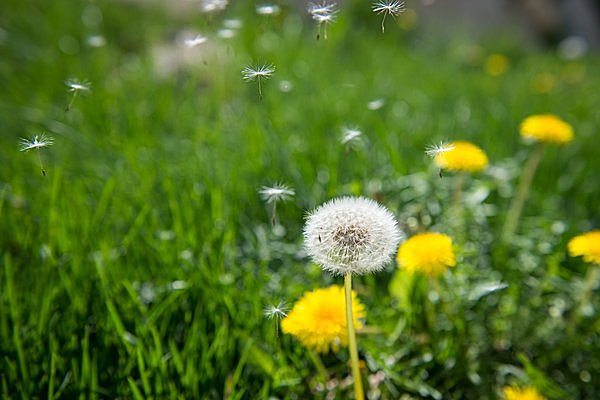🌼 Spring Blossoms & Little Explorers: Learning Through Flowers in Kanagawa
As winter says goodbye and the air turns soft and warm, something magical happens across Kanagawa—flowers begin to bloom. From the edges of local parks to quiet country paths, nature starts painting with color. And for children, it’s a perfect time to explore, imagine, and learn.
Spring isn’t just a season—it’s a living classroom, and wildflowers are some of the best teachers.
🌸 Wild, Not Planted: Respecting Nature’s Garden
Before we dive in, it’s important to teach children this golden rule:
🧡 Look, smell, admire—and only pick wildflowers.
Planted flowers, like those in public gardens or flower beds, are for everyone to enjoy and are often cared for by someone. But wildflowers, like those growing freely in open fields, ditches, or trails, offer a gentle opportunity for exploration.
Luckily, Kanagawa is full of lovely native wildflowers that are perfect for little nature detectives.
🌼 Meet Some Friendly Flowers of Kanagawa
Here are just a few wildflowers you might spot in springtime:
-
Nanohana (菜の花 / Rapeseed Blossoms) – These cheerful yellow flowers grow in clusters and often bloom in March. You might find whole fields filled with them!
-
Sumire (スミレ / Violet) – Tiny and often hiding in grass, violets are a favorite to spot. Their purple petals are delicate and fun to sketch.
-
Shirotsumekusa (シロツメクサ / White Clover) – These round white puffball flowers grow low to the ground and often bring bees and butterflies.
-
Tanpopo (タンポポ / Dandelion) – A childhood classic! First bright yellow, then a fluffy white wish-maker.
-
Tsutsuji (ツツジ / Azalea) – Bursting with bright pinks, reds, and purples, Tsutsuji are hard to miss in April and May. While many azaleas are planted in gardens and parks, you can also find wild varieties growing along hillsides and wooded areas in Kanagawa. Their trumpet-shaped petals and bushy leaves make them fun to spot—and they often attract buzzing bees and fluttering butterflies.
🧺 Bring a small basket, notebook, and a magnifying glass for your walk—you’ll be amazed at what your child notices.
🎨 Learning and Creating with Flowers
Once you’ve explored and admired the blooms, there are so many gentle, creative ways to bring flowers into play and learning:
🖍️ 1. Flower Sketching or Painting
Sit in the grass with crayons, markers, or watercolors and invite your child to draw what they see. Talk about the petals, stems, and leaves. Use simple prompts like:
“Is it tall or short?” “What shape are the petals?”
🧠 What they learn: Observation, color mixing, and nature vocabulary.
📘 2. Make a Wildflower Journal
Press the flowers between paper and heavy books for a few days, then glue them into a small notebook. You can help your child write the name of the flower (in English and Japanese!), where they found it, and how it made them feel.
🧠 What they learn: Categorizing, writing skills, and mindfulness.
🎭 3. Create Flower People or Pets
With collected petals, leaves, and sticks, help your child design a flower creature—maybe a “petal puppy” or a “leaf dragon.” Use tape or glue on paper and let the imagination bloom.
🧠 What they learn: Storytelling, spatial skills, and creative design.
🖼️ 4. Nature Mandalas
Using rocks, twigs, and flower pieces, show your child how to create a circular pattern (like a flower or sunburst) on the ground. Mandalas are calming and beautiful ways to practice focus and design.
🧠 What they learn: Patterns, symmetry, and mindfulness.
🔬 Flower Science: Color-Changing Petals
One of the favorite springtime experiments at Imagine is watching white flowers slowly change color! This simple, indoor activity teaches children how plants drink water—and brings a sense of wonder as color creeps into the petals over time.
We use both white wildflowers (like clover or daisies, picked responsibly) and store-bought blooms like carnations, daisies, or chrysanthemums. These flowers react well and show the changes clearly.
🌈 What You’ll Need:
-
Fresh white flowers (wild or store-bought)
-
Food coloring
-
Cups or jars
-
Water
-
Scissors (to trim stems)
🧪 How We Do It at Imagine:
We explore this experiment as a group, filling cups with water and adding food coloring. Some flowers go into single colors, while others have their stems split in half, each side placed in a different color. The split-stem results always surprise the children—it looks like nature’s own magic trick!
Before starting, children draw their predictions by coloring in a flower to show what they think will happen. Will it be red? Purple? Half-and-half? These drawings spark curiosity and discussion.
The flowers stay inside the classroom, and we check them together after lunch and the next morning. Watching the colors climb into the petals is exciting, calming, and truly memorable.
🧠 What children learn:
-
Capillary action (how plants absorb water)
-
Observation and prediction
-
That science can be colorful and full of surprises!
💡 Gentle Reminders for Flower Explorers
-
Don’t pick too many flowers—leave enough for the bees and butterflies.
-
Always stay on the path in natural areas.
-
If unsure, help your child gently admire with their eyes or take a photo instead.
-
Bring hand wipes or sanitizer—some plants can be sticky or attract bugs!
🌞 The Magic of Spring
When children spend time with flowers—touching, naming, drawing, and imagining—they begin to build a lifelong relationship with nature. And in Kanagawa, spring offers endless chances to slow down, look closer, and smile at the little things.
So next time the sun is shining and the breeze smells like blossoms, grab a hat, a basket, and your child’s hand. The wildflowers are waiting.










No comments:
Post a Comment